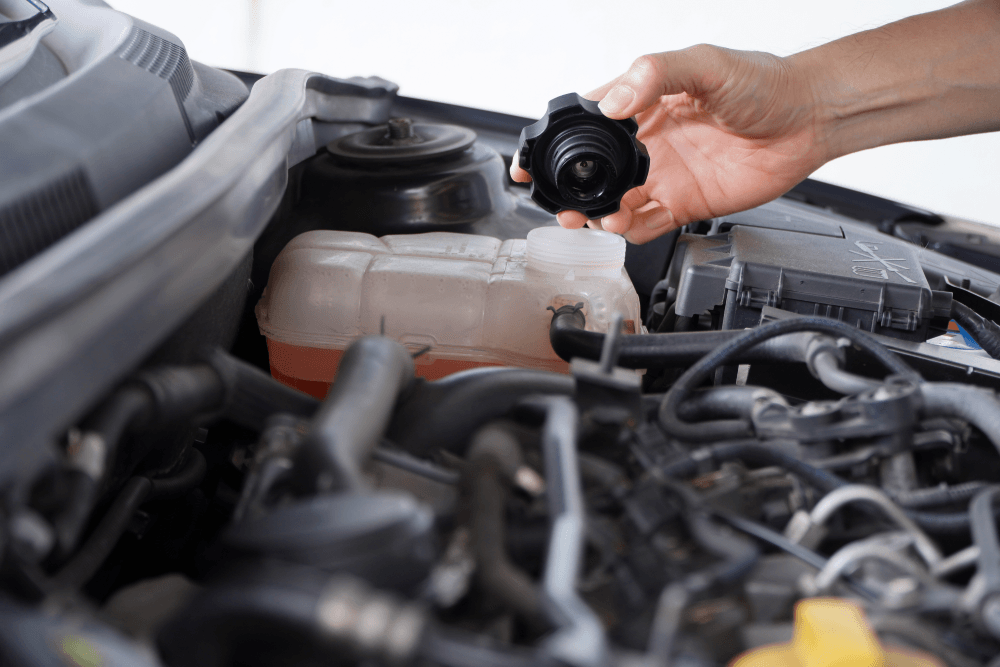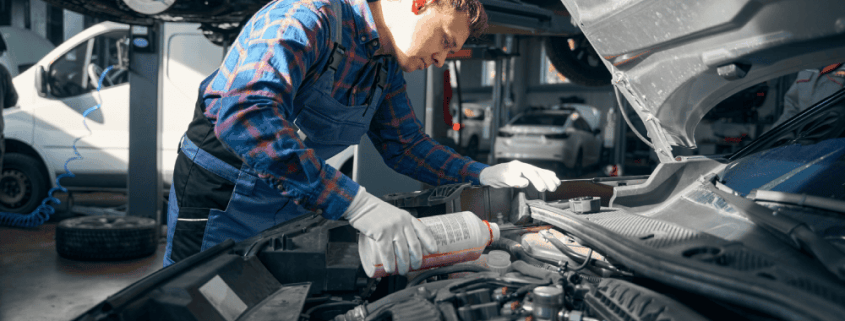How to check your car’s cooling system?
Spot cooling system problems early
Your car’s cooling system plays a crucial role in keeping the engine at the right temperature — not too hot, not too cold. Over time, heat, pressure, and wear can take their toll on this system, leading to leaks, corrosion, and other issues that may cause your engine to overheat. The good news? A simple cooling system check can help you catch problems early and avoid costly repairs down the track.
Whether you’re handy under the bonnet or just want to keep your car running smoothly, here’s how to check your car’s cooling system at home.
Why your car’s cooling system needs regular checks
Your vehicle’s coolant system is designed to regulate the engine’s temperature, prevent overheating, and protect critical components from damage. But like all parts of your car, it needs regular attention to keep functioning properly.
Here’s why it matters:
Prevents engine overheating
Low coolant levels or leaks can cause the engine to overheat quickly, especially in Aussie summer conditions.
Extends the life of your engine
Consistent cooling helps reduce wear and tear, saving you from premature engine failure.
Avoids expensive damage
Overheating can warp cylinder heads, damage head gaskets, and lead to major repairs.
Helps spot early warning signs
If your dashboard temperature gauge is creeping higher, or you’ve noticed steam, leaks, or a sweet smell from under the bonnet, your cooling system could be to blame.
Step-by-step: How to check your car’s cooling system
Keeping an eye on your cooling system doesn’t require a mechanic’s expertise — just a bit of care and attention. Follow these simple steps to check the key components and spot any potential issues early.
1. Let the engine cool completely
Before you do anything, make sure your engine is completely cool. Never remove the radiator cap while the engine is hot — hot coolant is pressurised and can cause serious burns. It’s safest to check the system first thing in the morning or after your car has been sitting for a few hours.
2. Check the coolant level
Open the bonnet and locate the coolant reservoir—a translucent plastic tank near the radiator with minimum and maximum markings. The coolant should sit between these lines. If the level is low, top it up with the correct type of coolant or antifreeze (refer to your owner’s manual), but avoid overfilling.
Note: Coolant is not the same as water. It’s a mix of antifreeze and water that helps prevent corrosion, raises the boiling point, and protects the engine.
3. Inspect the radiator cap and reservoir cap
Both the radiator cap and the cap on the coolant reservoir play a role in maintaining pressure within the system. Check them for signs of damage, rust, or wear. A faulty seal can lead to leaks or pressure loss, which may cause overheating.
4. Look for visible leaks
Leaks are among the most common cooling system problems. Look under the car for any puddles or staining that might indicate a coolant leak. Also, check around the radiator, hoses, and water pump for any signs of dripping, dried coolant residue, or corrosion. Even a small leak can reduce cooling efficiency and eventually cause engine overheating.
5. Check radiator hoses for wear
Squeeze the radiator hoses gently — they should feel firm but flexible. They may need replacing if they’re brittle, cracked, soft, or swollen. These hoses carry hot coolant between the engine and radiator, so any weakness in the material can lead to failure under pressure.
6. Monitor your temperature gauge while driving
Keep an eye on your dashboard’s temperature gauge. If it frequently rises above the normal operating range or fluctuates unexpectedly, it could indicate a problem in the cooling system, such as a failing thermostat, air in the system, or insufficient coolant circulation.

Bonus tip: Do a cooling system pressure test
A pressure test is a great next step if you’ve checked the basics but still suspect a cooling system problem. It’s designed to simulate the pressure your system experiences while driving, helping you identify any hidden leaks or weak spots.
What is a pressure test?
A cooling system pressure test involves using a special tool — a pressure tester — to pressurise the system while the engine is off and cool. This allows you to:
- Spot leaks in the system that may not appear during regular driving.
- Check if the radiator cap is holding pressure correctly.
- Identify if coolant is escaping into the engine, which may suggest a head gasket issue.
Can you do it yourself?
Yes — pressure testing kits are available at most auto stores and come with easy-to-follow instructions. Just make sure you choose a tester that suits your car’s radiator cap type. If you’re not confident doing it yourself, a mechanic or cooling system specialist like Natrad can perform a quick and accurate test for you.
Important: Never perform a pressure test on a hot engine. Always wait until the engine is completely cool before attaching the tester.
When to visit an auto cooling specialist?
While regular checks at home can help you spot issues early, there are times when professional support is the safest option — especially when you’re dealing with persistent coolant loss, visible damage, or signs of engine overheating.
Here are a few signs your car’s cooling system needs expert attention:
- You’re topping up coolant frequently – This could point to a hidden leak, pressure issue or internal engine problem.
- There’s steam, a sweet smell, or visible rust – These are red flags for leaking coolant or system corrosion.
- Coolant looks milky, rusty or sludgy – Indicates contamination or oil mixing with coolant — a serious issue.
- Your temperature gauge keeps rising – Especially if it spikes even after topping up the coolant.
If left unresolved, cooling system problems can lead to warped cylinder heads, a blown head gasket, or major engine damage — all far more expensive to fix than a quick inspection or repair.
Trust Natrad with your car’s cooling system
Whether you’ve noticed a coolant leak, a rising temperature gauge, or just want peace of mind, Natrad is here to help. As Australia’s trusted radiator and cooling system experts, we offer everything from pressure tests and hose replacements to complete system flushes and repairs.
Our technicians will thoroughly inspect your car’s cooling system to detect issues before they lead to overheating or engine damage. We only use high-quality parts and can recommend the right coolant for your make and model.
With locations across Australia and a reputation built on experience and reliability, Natrad can keep your engine running cool and smooth. Find your nearest Natrad auto repair shop or book a professional cooling system inspection today.









